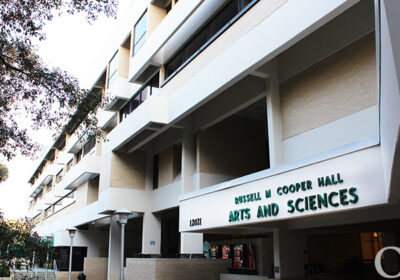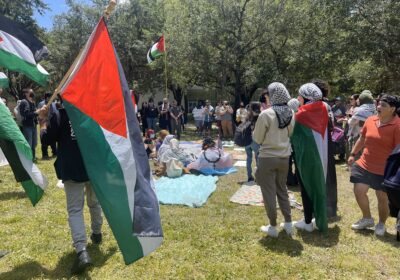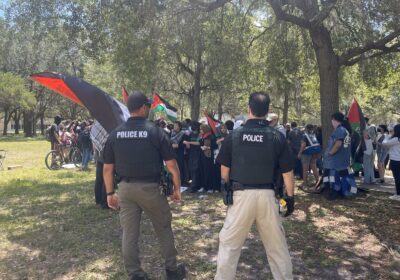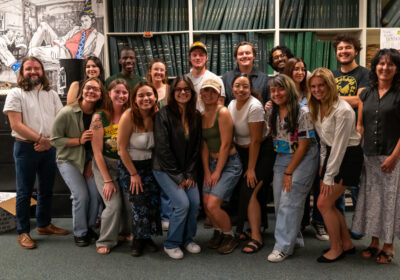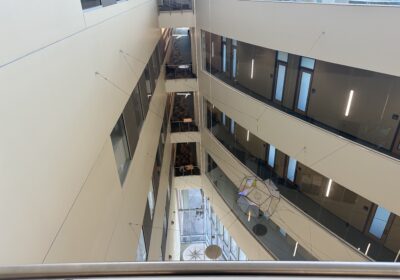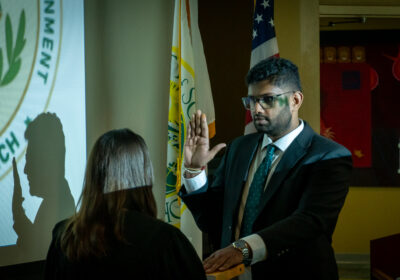Students voice concerns about relocation of Sycamore Fields Complex

Sophomore business analytics major Ashley Meinhold uses Sycamore fields to play soccer with her friends on the weekends.
Meinhold, who lives in the Village, would have to walk an additional half mile to exercise when the field is relocated due to the construction of the on-campus stadium. She said the extra 10-minute-walk would deter her from utilizing the recreational area.
“I won’t be using the trails or fields as much because they will be farther away from my dorm and because I don’t have a car to drive over there. It will be much more difficult to walk there, especially if I am carrying my soccer equipment,” Meinhold said.
The Board of Trustees (BOT) approved a plan in May to relocate USF’s 1.3-mile fitness trail and the softball and Sycamore fields located at the northeast corner of campus between USF Sycamore Drive and USF Holly. The decision to relocate is unpopular among students who use the trails recreationally and those who participate in club sports.
The Sycamore Fields Complex includes four grass fields, two softball fields, the fitness trail, a maintenance wash-down station and outdoor storage area. These areas are used by teams and individual students looking for an outdoor area to exercise.
The stadium construction, expected to be completed by 2026, will move the fitness trail and fields to the southwest corner of campus near USF’s research park, according to the BOT finance agenda.
Biomedical sciences major and president of the rugby club Derrick Lei-Sam uses the area for his club’s practices and personal fitness.
“It won’t affect how much the [rugby] club uses them, but I’m afraid that it may cause new members to be less inclined to come to practice and essentially damage our player retention rates,” Lei-Sam said.
He said the walking trail has been a “staple” for the rugby players in their conditioning training. Compared to other fields on campus, he said the Sycamore fields are in the best shape.
Junior health sciences major Sophia Lauro, who uses the fields for USF’s women’s lacrosse club, also felt the relocation could decrease the number of athletes willing to play club sports as the fields become temporarily inaccessible to students.
“This new change of field is definitely going to impact the volume of practices each club can have and times which affects how well the teams will do, in turn reducing the amount of players that come back to the club,” she said.
Lauro said she felt the relocation would hurt the club and intramural teams that rely on a consistent location for storing equipment and having set times for practices and games.
The fitness trails next to the fields attract club athletes as well. The shaded, tree-lined trail offers students like Meinhold a place to run both on her own time and with USF’s running club.
Meinhold also turns to the outdoor recreational areas to escape crowded sidewalks and appreciates the more secluded area for athletes.
Supply chain management junior George Keith, who also runs for the running club, said he was first attracted to the fitness trail due to the shade of its trees, and he now uses it to run every week.
While the proposed relocation area would be further from the on-campus areas he frequents, Keith’s main concern was if the trail would be as covered.
“That would kind of defeat the whole point for me,” Keith said. “It would be almost the same as running along a hot sidewalk then.”
Despite his concerns about how new recreational areas would look, Keith agreed the decision was fair.
“I understand that some sacrifices have to be made. As long as they give us new, permanent recreational areas that won’t be destroyed in the future, I’m okay with the trade off,” Keith said.
While she is not part of a club team, sophomore chemistry major Kiana Walton utilizes the trails for personal fitness. She said the relocation would be a major inconvenience for her since it would be further from her dorm.
Walton uses the outdoor recreational areas to exercise each week rather than going to the gym.
“Personally, the gym is an overwhelming place for me. I love being outdoors and I want to start incorporating cardio as I begin working out again. It’s so pretty,” she said.
“I don’t feel as judged. It’s a great way to get me started on my health journey before facing the gym,” she said.
One of the most impactful parts of the trails to Walton is the opportunity it allows for students to connect with nature at school.
“As a school that [cares] for the environment and is known for their beautiful trees, the trail is actually a big part of the school to me,” Walton said.
Like Walton, Meinhold understood the university’s decision, but felt it would make the recreational areas more difficult for students to use.
Students had mixed reactions about whether the relocation of the fitness trail and fields for USF’s on-campus stadium is fair to students.
Lei-Sam said the relocation was not fair because the changes to accommodate the on-campus stadium come at the expense of club sports athletes. The successful sports clubs do not get enough exposure on their own, according to Lei-Sam.
“I think it’s pretty unfair,” Walton said. “Though I love our sports teams and want to see them thrive, it is just messing with what little things we have to do on campus since it gets pretty boring.”

